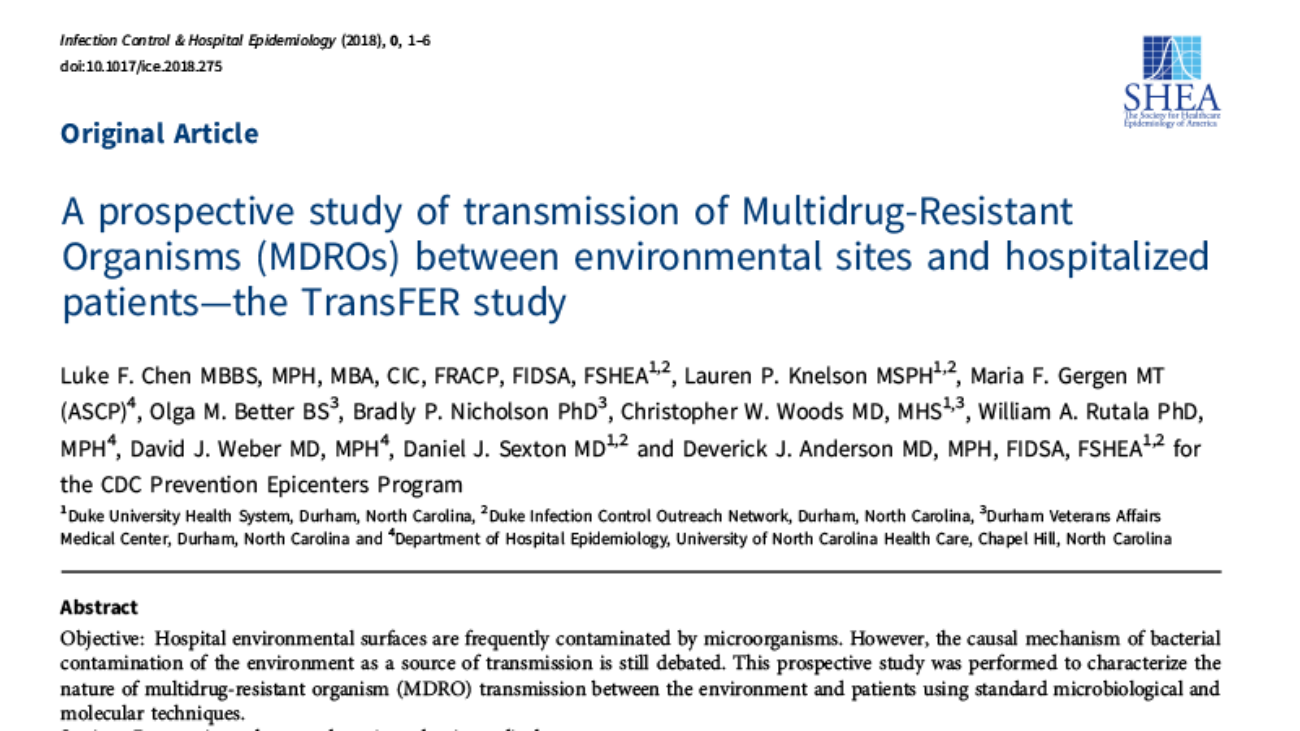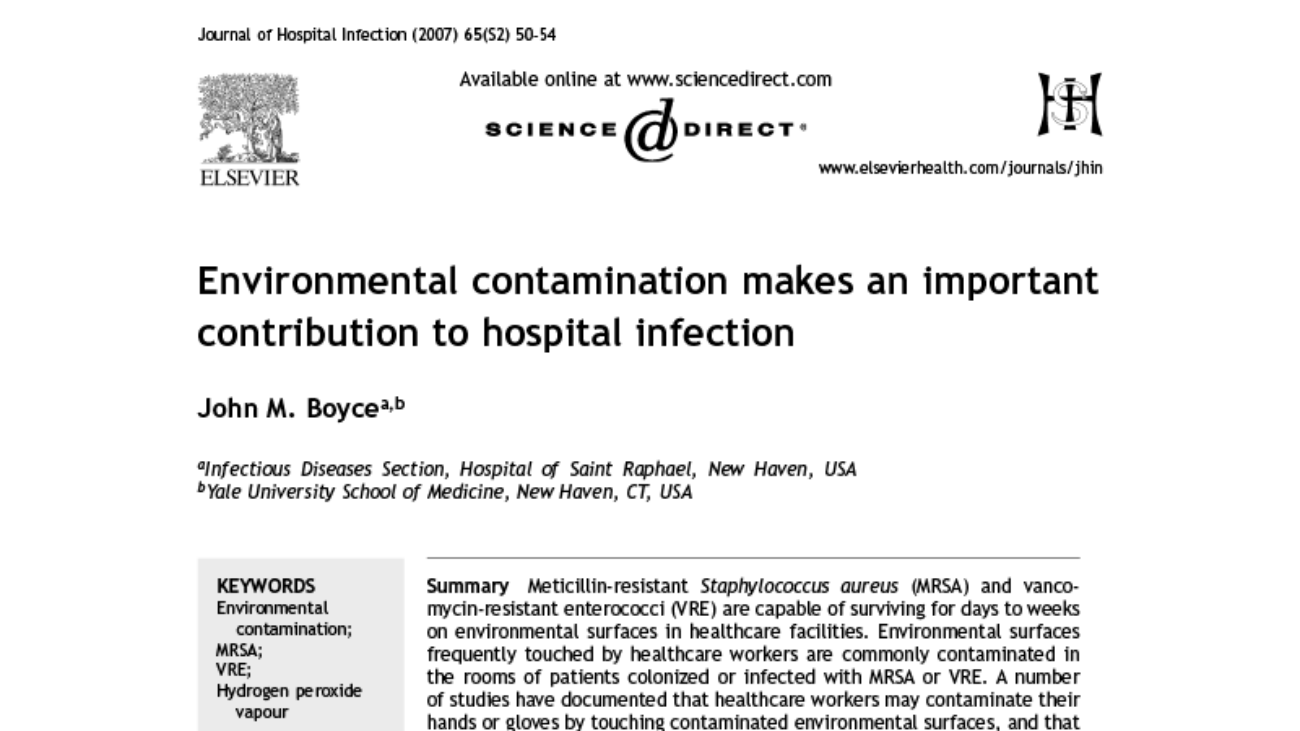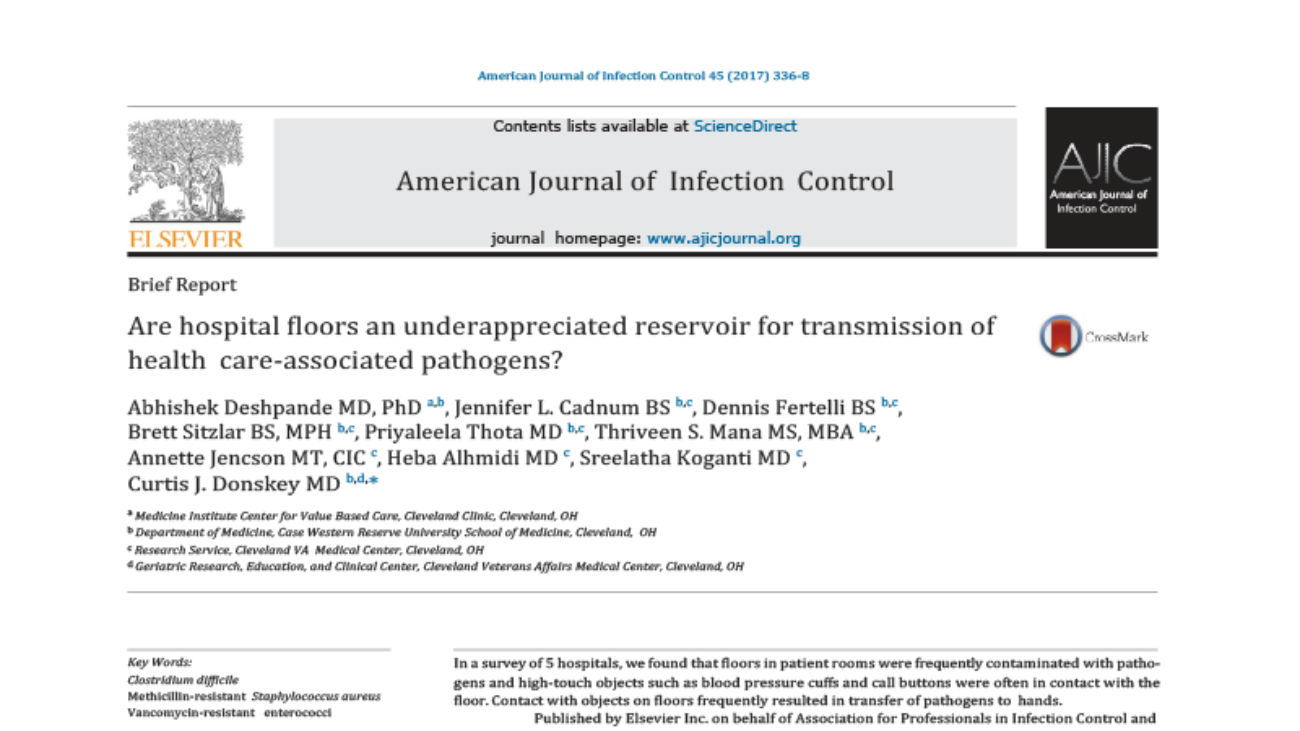Hospital environmental surfaces are frequently contaminated by microorganisms. When contaminated, such surfaces can potentially act as vectors for transmission of bacteria that can lead to healthcare associated infections (HAIs). Although contaminated surfaces have been hypothesized to play an important role in the causal pathway of HAIs, the nature, direction, persistence, and quantity of bacterial transfer between surfaces and patients remain poorly understood….
Environmental contamination makes an important contribution to hospital infection
Meticillin-resistant Staphylococcus aureus (MRSA) and vancomycin-resistant enterococci (VRE) are capable of surviving for days to weeks on environmental surfaces in healthcare facilities. Environmental surfaces frequently touched by healthcare workers are commonly contaminated in the rooms of patients colonized or infected with MRSA or VRE. A number of studies have documented that healthcare workers may contaminate their hands or gloves by touching contaminated environmental surfaces…
Vital Signs: Preventing Antibiotic-Resistant Infections in Hospitals — United States, 2014 Copy
Introduction
Antibiotic-resistant (AR) bacteria are a worldwide public health threat. A 2013 CDC report outlined the top 18 urgent, serious, and concerning AR threats in the United States (1). Among the 15 urgent and serious threats, seven are bacteria predominately acquired during health care. Clostridium difficile is included among these; although C. difficile is not drug resistant,
the infections it causes and its spread are exacerbated…
Are hospital floors an underappreciated reservoir for transmission of health care-associated pathogens?
Effective disinfection of contaminated surfaces is essential to prevent nosocomial transmission of pathogens such as Clostridium difficile, methicillin-resistant Staphylococcus aureus (MRSA), and vancomycin-resistant enterococci (VRE).1,2 Efforts to improve disinfection usually focus on surfaces that are frequently touched by the hands of health care workers or patients (eg, bed rails and call buttons). Although health care facility floors are often heavily contaminated,3-5 limited attention has been paid to disinfection of floors because they are not frequently touched. However, floors are a potential source of transmission because they are often contacted…




